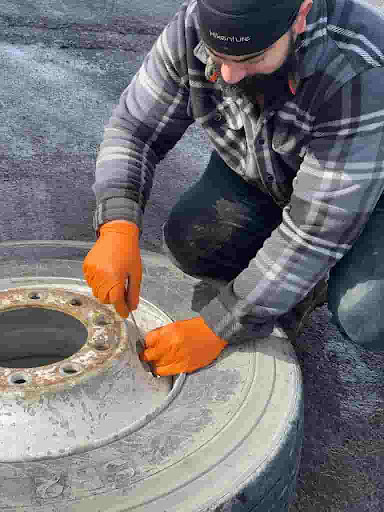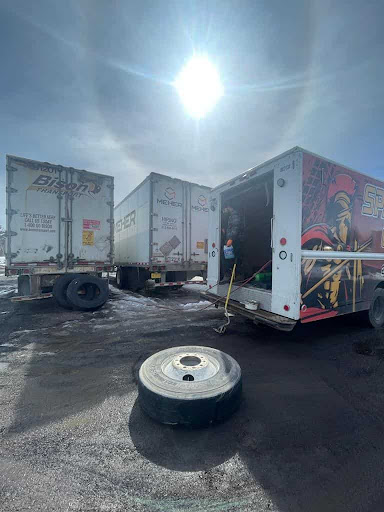While driving to a much-awaited vacation destination with your family, you suddenly feel a vibration and hear a strange noise from one of the car tires. Worried, you got out of the car and noticed a nail lodged in the tire, causing a puncture.
Yes, you have a flat tire, and you think, how lucky would I be if I had a tire repair shop in Ottawa near me and I could know the flat tire repair cost?
Tire repair refers to replacing a faulty tire with a new one or repairing a punctured one. The repair method depends on the size and location of the puncture or damage, and a professional tire technician should determine the best course of action. It’s important to note that you can’t repair all tire damages, and sometimes you need to replace the tire for safety reasons.
In this blog, we will dig deep into this topic.
What are the reasons for a Flat Tire?

There are several reasons why a tire may become flat. Some of the most common reasons include:
Tire Puncture
A Tire puncture is a hole in the tire caused by a sharp object like a nail or screw. This is one of the most common reasons for a flat tire.
Blowout:
A blowout occurs when the tire suddenly bursts while driving, often due to a weakened or damaged tire.
Valve stem damage:
The valve stem is the small rubber stem on the wheel that allows air to enter the tire. If the valve stem is damaged, air can leak out of the tire.
Bead leak:
The bead is part of the tire that connects to the wheel. If the seal between the tire bead and wheel is damaged, air can escape.
Over or underinflation:
If a tire is over or underinflated, it can cause damage to the tire, leading to a flat.
Aging tires:
Tires can deteriorate over time, causing them to become more susceptible to punctures, leaks, and blowouts.
Road hazards:
Debris, potholes, and other road hazards can cause damage to tires, leading to a flat.
It’s important to regularly check your tires for signs of damage or wear and to maintain proper inflation levels to prevent flats from occurring.
3 Methods of Repairing A Flat Tire
Whether you should repair or change a flat tire depends on the severity and location of the damage, as well as the age and condition of the tire.
Oftentimes, three methods are used to repair a flat tire :
Plug repair:
Tire plugs are strips of leather coated with a gooey rubber compound used to repair small punctures in tires caused by nails or similar objects. The plug fills the hole and vulcanizes under the driving heat to completely seal the repair. Plug repairs are straightforward and can be done without removing the tire from the wheel, but attempting to do so while the wheel is attached to the car is a challenging task that many find difficult to accomplish.
Patch repair:
A patch is a strong and effective adhesive-backed rubber piece applied to the inside of a tire that vulcanizes when heated. Although more expensive and time-consuming, patch repairs are more durable and reliable than tire plugs. Safety is of utmost importance, making it crucial to invest in a high-quality repair, even for small punctures.
Plug and Patch combination:
The plug and patch combination method is a tire repair technique that involves inserting a tire plug into the punctured area from the outside and applying a tire patch on the inside over the same area. This combination provides a more secure and durable repair than using only one method. Although it may take longer and cost more, this method is essential for ensuring the longevity and safety of the tire. Trained technicians typically do it with specialized equipment.
What is the Difference Between a Plug and a Patch?

The selection of Plug and Patch’s methods is usually done on the basis of the tire condition.
But, there are certain differences between both methods:
Difference 1
Plug tire repair inserts a short rubber strip directly into the punctured area. In contrast, in Patch repair, a larger piece of rubber is applied to the tire’s inner liner, covering the punctured area from the inside.
Difference 2
Tire plugs are a fast and straightforward solution to punctured tires, but they are considered temporary fixes and may need to be more dependable and long-lasting than other repair methods. On the other hand, tire patches are bonded onto the punctured area with adhesive and are generally more robust and enduring than tire plugs.
How Much Should A Tire Patch Cost?
It’s always a good idea to check with your local tire repair shop for their pricing and to get an estimate before agreeing to any repairs.
In general, the flat tire repair cost will depend on the extent of the damage and the type of repair needed. Generally, a simple patch or plug repair for a small puncture can cost between $10 and $30. In contrast, more extensive repairs, such as a sidewall repair or a complete tire replacement, can cost significantly more.
Additionally, you shouldn’t much worry about how much the tire patch cost as the cost may vary depending on the location, the type of tire, and the service provider.
Is It Worth Repairing A Flat Tire?
Modern tires with lower profiles are vulnerable to permanent damage if driven under-inflated. The heat generated can deteriorate the sidewall rapidly, making it crucial to avoid driving on a punctured tire, even for a short distance.
It is worth repairing a short tire if the puncture is less than an inch and is not on the sidewall. A slow leak caused by a nail or screw can be repaired at a reasonable cost or even for free if covered under warranty. Correctly done, the repair will restore the tire’s original strength and safety, ensuring it lasts its full life.
In conclusion, whether it is worth repairing a flat tire depends on the severity and location of the damage. If the puncture is on the sidewall, the tire cannot be repaired, and a replacement is necessary.
When Do You Need Tire Replacement Services in Ottawa?
When you have a damaged tire, it becomes essential to either repair it or replace it. Here are the reasons why you should need tire repair services –
In Ottawa tire replacement services are essential for your vehicle’s safety, performance, and longevity. Tire changes, in particular, are crucial for summer and winter driving.
- During the summer, it is recommended to switch to summer tires, which are made of a different rubber compound that provides better traction and handling in hot and dry conditions. It helps to reduce the risk of accidents, blowouts, and premature wear on the tires.
- Winter tires are a must-have during winter as they provide better traction and handling on snowy and icy roads than all-season or summer tires. They have a specific tread pattern and rubber compound that improves cornering, reduces stopping distances, and enhances acceleration on slippery surfaces, thereby increasing the safety of your vehicle.
Overall, tire changes are an essential part of tire services in Ottawa. They help to ensure the vehicle has appropriate tires for the current weather conditions, which can improve safety, performance, and longevity.
Conclusion
Safety is a top priority, as tires are the only part of the car in direct contact with the road. You should avoid patching your tires independently as it requires proper technique to avoid damaging the tire’s internal cords.
Spray repair kits may seem convenient, but they can damage sensors and cost more in the long run. Our tire technicians identify the leak and check for structural damage before deciding on a repair.
Contact us for fast and safe tire repair or replacement services.
